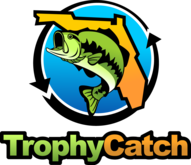
The TrophyCatch team would like to thank all our participants and partners as the conservation program wraps up its third season! TrophyCatch has continued to grow by leaps and bounds, and here are some of the milestones and accomplishments you've helped us achieve along the way:
■ Nearly 12,000 registrants, compared to 1,941 in Season 1. By registering you are automatically entered into the free Phoenix Boats bass boat drawing, and you do not have to submit a fish to win. Be sure to tell your friends, especially those that will take you fishing!
|
 |
|
■ Since the beginning of the program, almost 3,000 verified largemouth bass Lunker, Trophy, and Hall of Fame Club winners—all released trophy bass waiting to be caught again!
|
|
■ A banner season with 14 Hall of Fame bass over 13 pounds submitted. At time of writing, the heaviest is Seth Chapman's 15 lbs 11 oz monster from Kingsley Lake. Each Hall of Fame winner receives a custom replica of their catch as well as $200 in gift cards from Bass Pro Shops, along with other prizes.
|
|
|
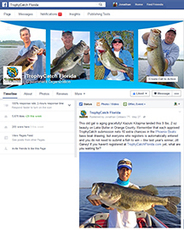 |
|
■ Over 5,500 Facebook page Likes. Be sure to Like our page to keep up to date on the latest catches, news, tips, and to share your own!
|
|
■ You can find outstanding promotion of Florida's freshwater fishing and TrophyCatch's conservation message through a variety of print and online media like newspapers, magazines, blogs, online news outlets and video channels like Sportsman’s Adventures with Captain Rick Murphy.
|
|
|
 |
|
TrophyCatch will be teaming with Keep America Fishing to keep our bass habitat clean and free of litter. Join us in signing the Pledge to Pitch It—commit to keeping your worn-out soft plastic lures in the trash and out of the water! Don’t miss the upcoming special promotion to win Bass Pro Shops gift cards that will run through December 2015!
|
All of this activity helps achieve the TrophyCatch goals, which are to preserve these valuable fish, learn how to enhance their abundance and promote recreational fishing. To see all the catches go to TrophyCatchFlorida.com and click on View Gallery or Search Catches, the latter allows you to narrow down results by angler, county, water body or date. Also be sure to follow TrophyCatchFlorida on Facebook and YouTube, and the Freshwater Fishing Blog at FloridaSportsman.com to learn more about trophy bass fishing in Florida—the Fishing Capital of the World.
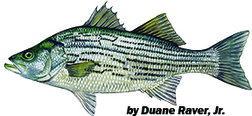
Size: A 5-pound sunshine bass is a good fish anywhere, but the state record rests at 16.3 pounds. The Big Catch minimum qualifying sizes are 20” or 5.0 pounds (see BigCatchFlorida.com).
Identification: Actually a hybrid, the sunshine bass is an artificial cross between two natives (a female white bass and male striped bass). This silvery or white fish has broken black lines on the front half of the body, and straight lines on the rear half. The change in pattern at the middle can vary, but is often very distinct. They are called sunshine bass in deference to the sunshine state where hatchery biologists first produced them, as the reciprocal cross to the palmetto bass. Palmetto bass have a striped bass mother and were first produced in South Carolina.
|
Similar species: Only the two parent species, the white bass and striped bass, might be mistaken for this fish. The broken-line patterning helps to distinguish the sunshine bass from both of them.
Angling qualities: The sunshine bass is a hard fighter—even topping the largemouth bass, fans will say. This species is not as accessible as the largemouth, however, and a more specialized approach is needed. During summer months, the deepest and coolest holes will be the only places to try. During winter, fish will migrate and can be ambushed at natural bottlenecks such as bridges or converging points within a lake. Highly piscivorous (eating fish), sunshines will take shiners or shad readily. The obvious lures include all minnow imitations, but spoons and jigs are also sound choices. Oddly enough, cut shrimp fished on the bottom will also produce fish. Sunshine bass, as sterile hybrids, do not reproduce, so they must be produced in hatcheries and stocked regularly by the Florida Fish and Wildlife Conservation Commission to maintain a population.
Where to catch them: Sunshine bass are found only where stocking by FWC provides this additional game fish for anglers to enjoy. Some of the best locations around the state include Lake Seminole, the Apalachicola River, the Upper and Lower St. Johns River, the Choctawhatchee River, the Escambia River and Bay, Eagle Lake, Lake Apopka, Edward Medard Reservoir, and the Osborne / Ida Chain-of-Lakes.
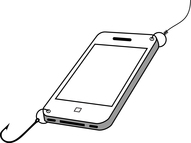
Last issue we got an introduction to the modern piece of technology known as the "smartphone", and began taking a look at how having one of these amazing gadgets in your pocket can help you catch more fish. We'll continue that discussion here.
A really helpful app (or program) that I’ve found for my phone is Doppler radar. This gives real-time rain information wherever you are. Various apps are available, but those touting high definition will be much more helpful. Time-lapse display allows you to guesstimate the direction and size of rain patterns. Mine paid for itself the day after I bought it: The forecast had predicted scattered showers, but I had rain the entire drive to my fishing hole and it didn’t let up when I got there. After a miserable hour of fishing in heavy rain, I finally pulled out my phone and could see that the rain pattern had stalled over my entire fishing area. I called it quits and went home to do indoors stuff for the rest of the day.
|
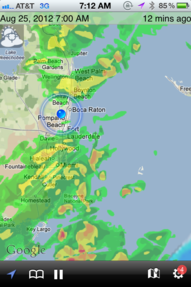
On the other hand, there have been times when I’ve kept fishing rather than throwing in the towel. On one outing, I spent six hours fishing in a narrow band of clear weather nestled between two major rainstorms immediately north and south of me. You can see this in the screenshot—I was at the blue dot. It was actually one of my more productive fishing days, with a five-pounder thrown in to top it off. I’m certain I would have stopped fishing sooner—and missed a great day—without the app. Of course, rain is one thing and lightning another; always exercise caution near thunderstorms and leave the area or seek safety if lightning threatens.
|
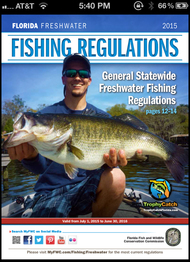
Another thing I use my phone for is as a small-screen digital reader. Any digital document that I can find or convert to PDF (Adobe Acrobat portable document format) can be stored and viewed on most smartphones. Examples of documents that I carry digitally with me wherever I go include the fresh and saltwater fishing regulations, FWC’s “Fishing Lines” magazine (which includes a saltwater fish identifier), FWC’s South Region canal maps collection (see our Fishing Forecasts at Bit.ly/AnglerGuide), and the local Water Management District’s canals and structures map. With my phone in hand, I’m a walking fishing encyclopedia!
|
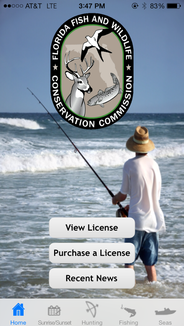
Besides general-use apps that may be useful for fishing, there are also specific fishing apps. Solunar tables, tide information, fish identification, fly fishing references, fishing spot maps, fishing trip advisors—there’s quite a bevy of helpful apps out there. Too many, in fact, to cover here, but you can search online for any of these or other keywords to find what might be helpful to you. Checking an app’s rating and reading some reviews will give you an idea if an app will do what you want. Some, like FWC's "Fish / Hunt FL" app for keeping track of your license and recent news, are completely free. A bevy of accessories are available for smartphones. The most important, hands-down, is a good case. Delicate electronics and the rugged (and wet) outdoors don’t mix, and protecting your phone from the elements is a must. There are literally hundreds of styles and colors, but I recommend a case made of a non-slip material such as silicone so that it’s not easily dropped. If you’re a kayak or wade angler, a waterproof phone case is recommended. Make sure you pick one for your specific model. If your case doesn’t include a screen cover of some kind, then a screen protector is a good accessory to consider—though phone screens are much more scratch-resistant than they used to be. A car charger or external power pack that can be charged via a USB connector and then plugged into your phone is another great convenience.
|

While smartphones themselves are small computers, you’ll need a home computer to take full advantage of most of the features mentioned here. Connecting a phone to your computer will allow you to download and store the photos you’ve taken, put handy reference documents or other information on your phone, or perform less important non-fishing functions (like load music or audiobooks for those long drives to the lake).
|
Keep in mind that features, capabilities, apps, and accessories will vary in function and availability depending on your cell phone service provider, phone platform (iPhone or Android for example), and the actual phone model you have. However, similar functionality to everything discussed above is available on most smartphones, and they can all do some pretty amazing things.
I’ve been using a smartphone for several years now, and have to admit that today I would have a hard time getting along without something I didn’t even own five years ago!
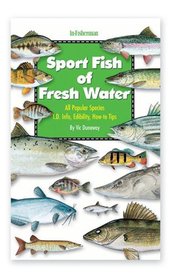
I'm a fisheries biologist today because my brother picked up a little paperback book for a quarter in a used bookstore when I was 12. That booklet, titled simply "Bass Fishing," got him started in angling, which I discovered was more interesting than anything else I was doing at the time. Forty years later I'm working for FWC promoting my lifelong passion. That little book changed my life!
I can't make the same claim for the other books we'll be discussing here, but even with smartphones, computers and iPads on the scene good old paper books still have a role to play in the angler's education. Here's a small library of books that I've found most helpful, to myself and other anglers, over the years.
One of the first things you need to know is what fish you've just caught. For a simple and easy-to-use guide, I like Vic Dunaway's Sport Fish of Fresh Water. Some of the fish illustrations could be better, but it covers most of what you're likely to run across as a Florida angler including some of our exotic species.
|
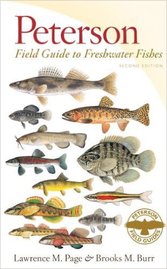
For the really serious angler that needs to know the name of every minnow, go with the Peterson Field Guide to Freshwater Fishes by Lawrence Page and Brooks Burr. This guide covers everything, except for some of our exotic species. This book is part of the outstanding Peterson Field Guide series, which combines ease of use with outstanding illustrations. Note that while many of the illustrations are black-and-white, you can't always depend on color when identifying fish. I also recommend field guides with illustrations (like this one) rather than photographs, because photographs are subject to lighting, subject positioning, and other variables that can't always be controlled.
|
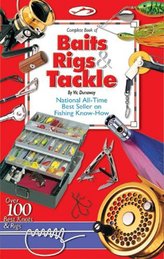
Another book by Vic Dunaway, the Complete Book of Baits, Rigs & Tackle has become a classic over the years. It includes just about everything you need to know about baits, lures, rods, reels, lines, knots, rigs, terminal tackle, and a dozen more topics. For those that, like me, fish in fresh and salt water, both are covered. This updated edition includes an instructional DVD. No matter how long you've been fishing, you'll find a new trick or two in this one!
|
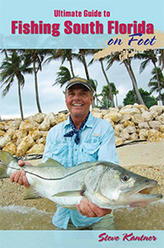
The Ultimate Guide to Fishing South Florida on Foot by Steve Kantner is actually a newer book that doesn't quite yet have the heritage of some of those listed above. But it's a real gem, because it pulls together unique information that I haven't seen collected in any other single volume. I work in south Florida, and information about our freshwater resources—many of them manmade—is often limited. This book fixes that problem, and in grand style using detailed fishing maps provided courtesy of FWC. It covers both fresh- and saltwater fishing, and includes information on our unique collection of exotic species and how to catch them. While this book focuses on fishing on foot, don't worry—we've heard you can catch fish from a boat, too.
|
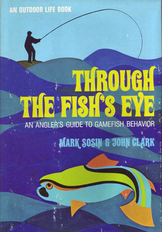
Through the Fish's Eye, by famed angler and writer Mark Sosin along with John Clark is, sadly, out of print—but a reprint is planned for 2016. If you want to "think like a fish", this is the book for you! It covers various aspects of fish biology like smell, sight, hearing, swimming mechanics, and feeding strategy and applies them practically to fishing. This one is well-illustrated and a definite classic. This volume is still readily available used, but hopefully the upcoming reprint will bring this book up to date with the latest fisheries research.
|
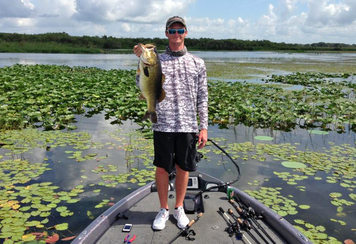
Size: 34,976 acres.
Location: Osceola County.
Description: Lake Kissimmee is the largest of five main water bodies on the famous Kissimmee River in central Florida. Nationally renowned for consistently producing high quality fishing, Lake Kissimmee continues to be a favorite fishing destination of both residents and anglers visiting Florida. As a result of aggressive habitat management, anglers fishing the lake will find both a diverse and expansive plant community at their disposal, providing numerous areas to try their luck and have an excellent chance at some stellar action. Based on results from recent angler surveys conducted in spring (January - May) 2015, bass fishing continued to be very good as anglers experienced a catch success rate of 0.60 fish/hr (double the average across the state). Lake Kissimmee is also a popular water body among the tournament bass fishing community with both area club and professional tournaments held there annually.
Native grasses, bulrush, cattail, hydrilla and lily pads at Philadelphia Point, North Cove, Brahma Island and the Pig Trail provide anglers with excellent cover to pitch or flip plastic baits or slow-troll golden shiners for spawning bass during the winter and spring seasons. Rattling crankbaits, plastic frog imitations, soft jerkbaits, minnow-type stickbaits and Texas- or Carolina-rigged plastic worms fished in open-water or along edges of vegetation are productive during summer and fall. Fly fishermen have access to some outstanding areas to wade fish and consistently have good success with popping bugs during the spring and summer.
Three fish camps, one state park and two public boat ramps are available to anglers. For more information about the Kissimmee Chain of Lakes visit our Fishing Forecast.
|
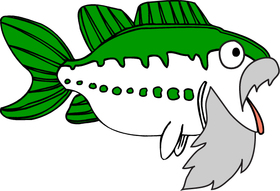 |
One of the most important factors fisheries biologists must determine in order to fully understand a fish population is its age structure. This includes knowledge not only of how old individual fish are, but what percentage of the population makes up each different age group.

Aging fish is based on the principle that fish grow at a slower rate during the winter when cooler temperatures slow metabolism. In body parts (such as scales or bones) where growth layers are laid down, winter growth layers will be spaced more closely together than warm-weather, fast-growth layers. These narrower and closer layers, as a group, will appear as a single dark band, while the wider and more broadly-spaced growth layers laid down during warm weather will appear as a single light-colored band. Each light and dark band represent a single year’s growth in a fish’s life. This is the same basic principle as counting rings on a tree.
|
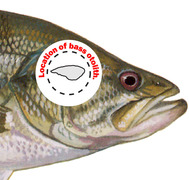 |
|
This light/dark contrast will not be as distinct in Florida’s warm subtropical climate as it would be in much colder northern states, and certain body parts (scales, spines, and certain bones) are more reliable for some species of fish than for others. In our mild Florida climate, ear bones called “otoliths” have been found to be the most reliable for aging largemouth bass. These earstones are located within the skull and are important to the fish for sound and vibration detection.
|
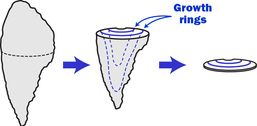
When properly sectioned, these otoliths can reveal growth rings (called “annuli"). A very thin slice is carefully cut from the otolith using a fine jeweler's saw and the cross section mounted on a microscope slide. At 100X magnification, the growth rings can be counted (or “read”) and the age of the fish determined.
|
Counting the rings, or annuli, on an otolith takes experience and a sharp eye -- especially when looking at something so small, even under a microscope! The fish this otolith drawing was made from was 5 years old. Much research on Florida largemouth bass has shown that on average bass grow about a pound a year. So, a 10-pound bass is probably about 10 years old. However, depending on available forage, temperature, and other growth conditions the age range of a bass that large could vary from only 4 years old (fast growth rate) to 16 years old (slow growth rate). We'll talk more about how fisheries biologists use this age information in an upcoming issue!
This newsletter got its start as a regional freshwater fishing periodical, "The City Fisher", in heavily urbanized southeast Florida. Back issues are available. To contact the "Florida Freshwater Angler", email John Cimbaro.
|